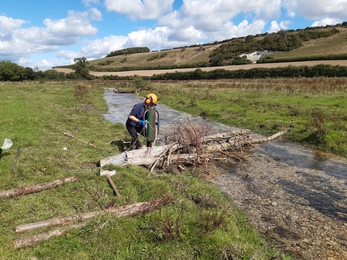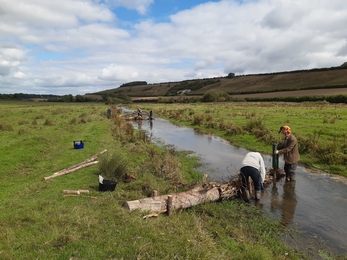This September, an exciting partnership project saw two kilometres of river restoration work completed on the Devil's Brook, a 14 km long watercourse rising in the chalk hills near Higher Ansty, that flows south to join the River Piddle near Athelhampton. Much of the river is heavily modified, having been straightened and over-widened which has significantly reduced the habitat quality and biodiversity of the river.
However, all is not lost for the Devil's Brook. A partnership of organisations including Wessex Water, Wild Trout Trust, Farming and Wildlife Advisory Group Southwest, with the support of Environment Agency and Natural England, have been working with local landowners and managers to look at river restoration opportunities.
Trees, whether standing or fallen, provide vital habitat along a watercourse. Unfortunately, modern land management practices mean that fallen trees are often removed. Our Rivers and Wetlands team, with the help of local land managers, trustees and Wessex Water volunteers, have installed 33 Large Woody Debris (LWD) features along a two-kilometre targeted reach, to replicate fallen trees.






